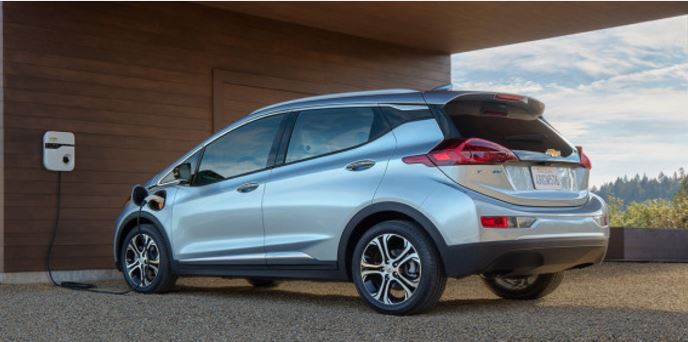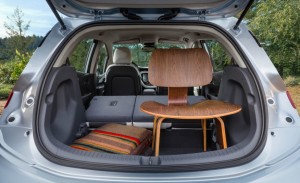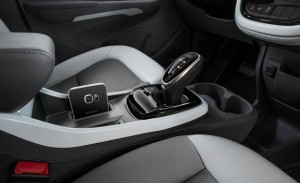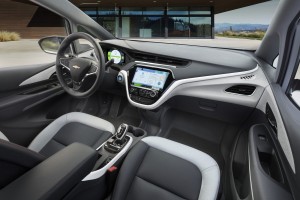News
Will the 200 mi, $30k Chevy Bolt challenge Tesla’s Model 3?
The Chevy Bolt and Tesla Model 3 will be priced nearly the same and will have about the same range. Is there room enough in the market for both or will one dominate the other in sales?
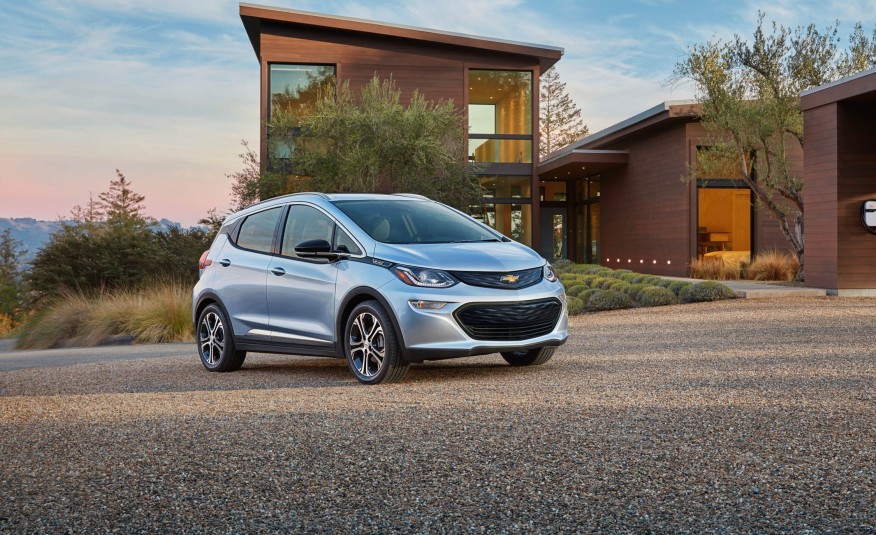
Chevrolet unveiled its production all electric Bolt at the Consumer Electronics Show (CES) this week. Promising a range of 200 miles on a single charge, and at a price point in the $30,000 range, the Chevy Bolt has many wondering how this will stack up against Tesla’s upcoming mass market Model 3, to be unveiled in March.
Price and Range
Both cars will be similarly priced. Tesla says the Model 3 will start at $35,000. Mary Barra, GM’s CEO said at CES on Wednesday the Bolt will start at $37,500 before incentives and rebates. Though she didn’t give any details about trim levels and options, we know that a fully equipped Chevy Volt costs about $8,000 more than the base model. Add the same amount to the Bolt and you have a retail price just north of $45,000.
In all likelihood, Tesla will offer a number of options on the Model 3 including a choice of battery sizes, single or dual motors, and possibly falcon wing doors as hinted by Elon Musk. It wouldn’t take much to get the price of a Model 3 above $45,000. We wouldn’t be surprised if a fully loaded Model 3 nudges the $60,000 mark.
Styling

Beauty is in the eye of the beholder, which couldn’t hold more true when it comes to the looks of the Chevy Bolt. Some have said it resembles a BMW i3 in the front and a Honda Fit in the rear. Despite the compact look of the Bolt, it’s quite roomy inside. The front seats are a monopost design similar to what Tesla uses for the second row seats in the Model X. The center console floats between the seat, leaving lots of foot room for rear seat passengers. The Bolt’s flat floor means it’s easy to slide in and out. It also has slightly more cargo room than the Honda Fit.
- Roomy Chevy Bolt storage capacity
No one knows yet what the Model 3 will look like, but Tesla has done an excellent job designing its cars so far. The Model S still looks modern even though it has been on the road for 4 years. We hear reports that Elon is pushing his engineers to get the coefficient of drag on the Model 3 below .20, which may require some extreme exterior designs. From what we know, the Model 3 will be larger than the Bolt, but is expected to be a sedan, at least initially. The Bolt is more of a crossover utility vehicle.
Connectivity and Autonomous Driving
Tesla has an enormous lead over other manufacturer thanks to its Autopilot software that shares what it knows with other Teslas via the cloud. It also has one of the user interfaces in the business. The touchscreen in the Bolt is adequate but not groundbreaking. The area where the Bolt and the Model 3 may be direct competitors is in the market for on-demand car sharing.

Ms. Barra announced the Bolt will have app based software that will make it suitable for car sharing. The corollary is that General Motors just invested a half billion dollars in Lyft. It clearly is positioning itself for the new transportation paradigm in which people don’t own cars anymore. They simple request the kind of car they need when they need it and pay the appropriate fee. Particularly for people in crowded urban areas, that model makes perfect economic sense.
But Tesla has its eye on that market as well. Who can forget Elon’s awkward moment during a recent conference call when analyst Adam Jonas asked him if Tesla was interested in pursing on-demand car sharing? Musk’s demeanor made it clear that Jonas’ question had hit a nerve. That’s where the collision between the Chevy Bolt and the Tesla Model 3 may occur, as both attempt to exploit new market opportunities.
Timing
Mary Barra confirmed Wednesday that Chevy Bolt production will begin late in 2016. That should give it about a one year head start in the market on the Tesla Model 3 — assuming Tesla keeps to its stated timeline. If it does, it will be the first time in company history. If it is delayed, it may spot the Bolt such a massive lead that it will never be able to catch up.
Elon Musk has challenged other automakers to make more and better electric cars. The Chevy Bolt is GM’s first attempt to rise to the challenge. Whether it is a Tesla killer or just a pretender won’t be known until at least a year from now.

News
Tesla FSD V14.2.1 is earning rave reviews from users in diverse conditions
Tesla’s Full Self-Driving (Supervised) software continues its rapid evolution, with the latest V14.2.1 update drawing widespread praise.

Tesla’s Full Self-Driving (Supervised) software continues its rapid evolution, with the latest V14.2.1 update drawing widespread praise for its smoother performance and smarter decision-making.
Videos and firsthand accounts from Tesla owners highlight V14.2.1 as an update that improves navigation responsiveness, sign recognition, and overall fluidity, among other things. Some drivers have even described it as “more alive than ever,” hinting at the system eventually feeling “sentient,” as Elon Musk has predicted.
FSD V14.2.1 first impressions
Early adopters are buzzing about how V14.2.1 feels less intrusive while staying vigilant. In a post shared on X, Tesla owner @LactoseLunatic described the update as a “huge leap forward,” adding that the system remains “incredibly assertive but still safe.”
Another Tesla driver, Devin Olsenn, who logged ~600 km on V14.2.1, reported no safety disengagements, with the car feeling “more alive than ever.” The Tesla owner noted that his wife now defaults to using FSD V14, as the system is already very smooth and refined.
Adverse weather and regulatory zones are testing grounds where V14.2.1 shines, at least according to testers in snow areas. Tesla watcher Sawyer Merritt shared a video of his first snowy drive on unplowed rural roads in New Hampshire, where FSD did great and erred on the side of caution. As per Merritt, FSD V14.2.1 was “extra cautious” but it performed well overall.
Sign recognition and freeway prowess
Sign recognition also seemed to show improvements with FSD V14.2.1. Longtime FSD tester Chuck Cook highlighted a clip from his upcoming first-impressions video, showcasing improved school zone behavior. “I think it read the signs better,” he observed, though in standard mode, it didn’t fully drop to 15 mph within the short timeframe. This nuance points to V14.2.1’s growing awareness of temporal rules, a step toward fewer false positives in dynamic environments.
FSD V14.2.1 also seems to excel in high-stress highway scenarios. Fellow FSD tester @BLKMDL3 posted a video of FSD V14.2.1 managing a multi-lane freeway closure due to a police chase-related accident. “Perfectly handles all lanes of the freeway merging into one,” the Tesla owner noted in his post on X.
FSD V14.2.1 was released on Thanksgiving, much to the pleasant surprise of Tesla owners. The update’s release notes are almost identical to the system’s previous iteration, save for one line item read, “Camera visibility can lead to increased attention monitoring sensitivity.”
News
Tesla FSD Supervised ride-alongs in Europe begin in Italy, France, and Germany
The program allows the public to hop in as a non-driving observer to witness FSD navigate urban streets firsthand.

Tesla has kicked off passenger ride-alongs for Full Self-Driving (Supervised) in Italy, France and Germany. The program allows the public to hop in as a non-driving observer to witness FSD navigate urban streets firsthand.
The program, detailed on Tesla’s event pages, arrives ahead of a potential early 2026 Dutch regulatory approval that could unlock a potential EU-wide rollout for FSD.
Hands-Off Demos
Tesla’s ride-along invites participants to “ride along in the passenger seat to experience how it handles real-world traffic & the most stressful parts of daily driving, making the roads safer for all,” as per the company’s announcement on X through its official Tesla Europe & Middle East account.
Sign-ups via localized pages offer free slots through December, with Tesla teams piloting vehicles through city streets, roundabouts and highways.
“Be one of the first to experience Full Self-Driving (Supervised) from the passenger seat. Our team will take you along as a passenger and show you how Full Self-Driving (Supervised) works under real-world road conditions,” Tesla wrote. “Discover how it reacts to live traffic and masters the most stressful parts of driving to make the roads safer for you and others. Come join us to learn how we are moving closer to a fully autonomous future.”
Building trust towards an FSD Unsupervised rollout
Tesla’s FSD (Supervised) ride-alongs could be an effective tool to build trust and get regular car buyers and commuters used to the idea of vehicles driving themselves. By seating riders shotgun, Tesla could provide participants with a front row seat to the bleeding edge of consumer-grade driverless systems.
FSD (Supervised) has already been rolled out to several countries, such as the United States, Canada, Australia, New Zealand, and partially in China. So far, FSD (Supervised) has been received positively by drivers, as it really makes driving tasks and long trips significantly easier and more pleasant.
FSD is a key safety feature as well, which became all too evident when a Tesla driving on FSD was hit by what seemed to be a meteorite in Australia. The vehicle moved safely despite the impact, though the same would likely not be true had the car been driven manually.
News
Swedish union rep pissed that Tesla is working around a postal blockade they started
Tesla Sweden is now using dozens of private residences as a way to obtain license plates for its vehicles.

Two years into their postal blockade, Swedish unions are outraged that Tesla is still able to provide its customers’ vehicles with valid plates through various clever workarounds.
Seko chairman Gabriella Lavecchia called it “embarrassing” that the world’s largest EV maker, owned by CEO Elon Musk, refuses to simply roll over and accept the unions’ demands.
Unions shocked Tesla won’t just roll over and surrender
The postal unions’ blockade began in November 2023 when Seko and IF Metall-linked unions stopped all mail to Tesla sites to force a collective agreement. License plates for Tesla vehicles instantly became the perfect pressure point, as noted in a Dagens Arbete report.
Tesla responded by implementing initiatives to work around the blockades. A recent investigation from Arbetet revealed that Tesla Sweden is now using dozens of private residences, including one employee’s parents’ house in Trångsund and a customer-relations staffer’s home in Vårby, as a way to obtain license plates for its vehicles.
Seko chairman Gabriella Lavecchia is not pleased that Tesla Sweden is working around the unions’ efforts yet again. “It is embarrassing that one of the world’s largest car companies, owned by one of the world’s richest people, has sunk this low,” she told the outlet. “Unfortunately, it is completely frivolous that such a large company conducts business in this way.”
Two years on and plates are still being received
The Swedish Transport Agency has confirmed Tesla is still using several different workarounds to overcome the unions’ blockades.
As noted by DA, Tesla Sweden previously used different addresses to receive its license plates. At one point, the electric vehicle maker used addresses for car care shops. Tesla Sweden reportedly used this strategy in Östermalm in Stockholm, as well as in Norrköping and Gothenburg.
Another strategy that Tesla Sweden reportedly implemented involved replacement plates being ordered by private individuals when vehicles change hands from Tesla to car buyers. There have also been cases where the police have reportedly issued temporary plates to Tesla vehicles.
